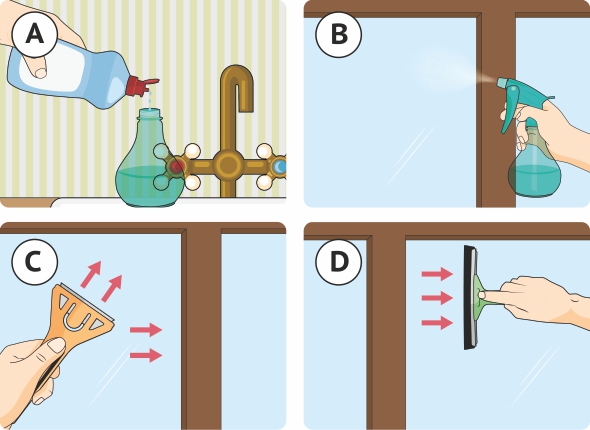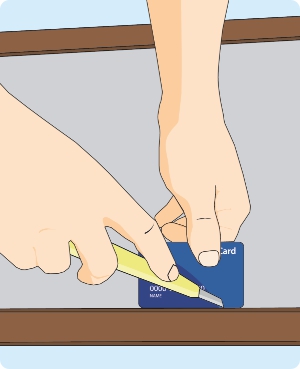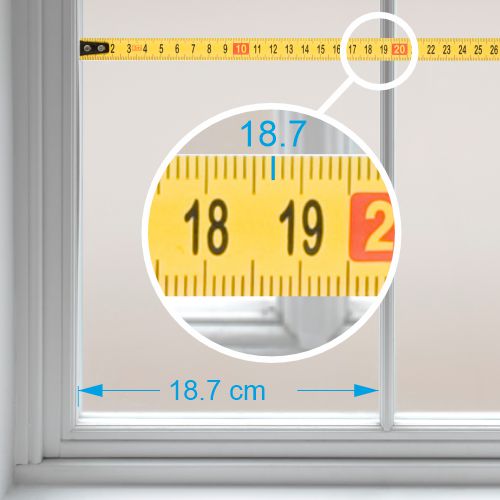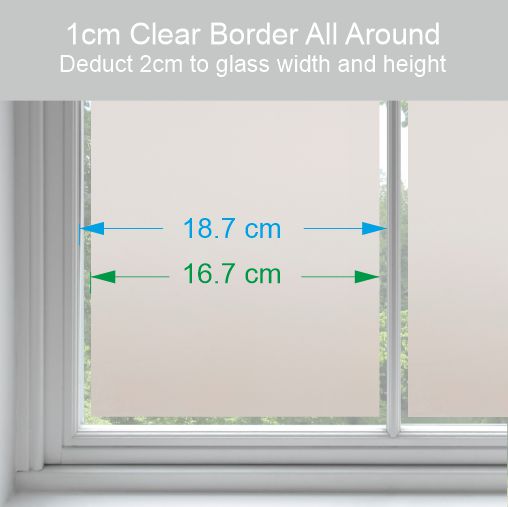

HRF 40 Heat Rejection Window Film
Our HRF-40 heat rejection and window insulation film is our most efficient film in this range and helps reject 57% of solar energy whilst allowing 62% of visible light through. The film can be purchased by the metre in a length of your choice, cut to size for ease of installation, and has a very light Champagne colouring. Targets 80% of short wave infrared.
Read MoreProduct Description
- Helps prevent heat gain
- Save on air conditioning costs
- Helps prevent fading of furnishings
- Limited loss of natural light
- Ideal for retail outlets
- 1.52m and 0.91m widths
Our HRF-40 Heat Rejection Film is a solar control film designed to prevent slow wave infrared components responsible for heat gain, from going through the glass and warming up your room. It will reduce ambient temperature by a few degrees therefore making your office or room more comfortable, and help you save on your air conditioning bills. It will also help in limiting heat loss in the winter therefore saving on heating costs.
This product is ideal for home or office, and can be applied internally on any glass surface. This film is truly revolutionary as it is virtually clear with just the lightest Champagne colouring, therefore enhancing your comfort without the draw back of the loss of natural light associated with reflective and tinted films.
This film is very popular with businesses who want to save on their air conditioning costs, including retailers where applying tinted film on shop fronts is not an option, and offices with large windows which require constant temperature control with no loss of natural daylight.
This product doesn't act as an air conditioning unit and is not designed to keep a constant temperature in a room. It is designed to help reduce ambient temperature by a few degrees and therefore save on air conditioning costs.
For a more efficient product, please consider using a tinted or reflective film instead, but you will have to sacrifice natural daylight. Please check product Specifications or download PDF for glass compatibility.
Samples
Not sure whether this is the right film for your purpose? We offer free 10cm x 10cm samples. The pictures depicting the film are only for illustration purposes, so a sample is recommended to make an educated choice. If you'd like to try a larger piece before committing to a large order, just order a small amount of film, or a cut to size piece to test on a pane.
Returns and refunds
We will only accept returns for films purchased by the metre. Just send it back to us in it's original condition and packaging. We cannot accept returns for films cut to size however, as they have no resale value.
Will this film reduce the heat by several degrees?
It all depends on a range of factors. If you have a large room with small single pane windows, then the effect would be more felt than if you had a large south facing double glazed window in a small room. On a large building with hundreds of windows, the cost benefits would be greater than in a small office with a couple of windows.
Back to top
Product Specification
How To Apply
Step by step instructions on how to apply window film & frost glass
Regardless of the type of window film or stickers you purchase, whether frosted, tinted, mirror or decorative, the principle on how to fit window film will be the same. We also have several targeted video tutorials which you will find by clicking here.
Glass Preparation (the crucial task)

Make a slip solution using a few drops of washing up liquid mixed with water in a spray bottle and thoroughly clean the glass. Use a glass scraper to remove specks of paint, or any other glass covering like stickers.
Film Cutting

Unless your window film is already cut to size, and if the film has a paper liner with a metric grid, measure your glass at the top and bottom, and left and right and mark and cut your window film. You can also cut the film bigger than required and trim it once applied to the glass.
Film Application

A. Thoroughly wet the glass with the slip solution.
B. Place the window film face down an a flat surface and expose a small amount of the adhesive or cling side.
C. Spray the adhesive or cling side liberally with the slip solution as you peel off the protective liner.
D. Slip the adhesive or cling side of the film on the glass butting one edge and the top against the window frame or rubber gasket (double glazed unit).
Squeegee Technique

A. Liberally wet the face of the film with the solution to act as a lubricant fro your squeegee or felt edged tool.
B-C. Squeeze out the solution from under the film using a firm and even pressure, starting from the top and working your way down and across the film.
Film Trimming

Run a credit card and a retractable knife blade down the edge of the glass to trim any excess film. The thickness of the card will allow for a small gap to help any remaining solution to be squeezed out. Once trimming is complete go over the film once more to squeeze out all the solution.
Final Checks
1. Make sure that all the solution has been squeezed out.
2. Wipe the film and any remaining solution with paper towel.
3. Inspect the film on both sides of the glass to check for any trapped solution or air bubbles.
How To Remove Window Film
Removing window film can be a very easy process, but it all depends on how long the film has been on the glass, and the type of film that was used.
Here's a video tutorial which shows the basic principal.
Typically, films are either made using PVC or PET.
PVC is a soft material which can be peeled off the glass with a glass scraper. Any glue residue can be removed with soapy water and a scraper.
PET is a brittle material widely used for solar and safety film, and might be made of layers of mettalised material. To remove this type of film, use a wide glass scraper and lubricate with soapy water to remove the film.
As a rule, old PET film are more difficult to remove than PVC films.
For large panes, it is best to first score the film into strips with a sharp knife. This means that you can tackle it in more manageable pieces.
Measuring Tips
Ready to place your window film order?
You will first need to measure the glass, in centimetres, using a tape measure. Only measure the glass you want to cover.

Width: measure from left to right at the top and the bottom of the glass, and take note of the largest measurements (some older wooden windows are not perfectly square).
Height: measure from top to bottom on the left and the right of the glass, and take note of the largest measurements.
Top tip
Leaving a clear gap around frosted or patterned film is a stylish and practical option, allowing you to peep out when someone is at the door for example. To create a clear outline around the film, deduct twice the width of the desired clear outline, to the width and the height of your pane.

For example, if you want a 1cm (10mm) clear gap all the way round, deduct 2cm from the width, and the same from the height.
Fitting the film with a gap all the way round is much easier, especially on old wooden windows and doors which are not always in the best condition, and where the edge of the glass has paint encroachment.
Care
How To Care For Your window film After Installation
Window film is very easy to look after and you won't need any special products to clean it with. In fact, soapy water, similar to the solution you used to apply the film is the best cleaning product.
Do's
Wait for at least 3 weeks before first cleaning your film
Use soapy water
Use a soft cloth or paper towel
Use a rubber edged squeegee (unless the film is printed or has cut outs) in good condition
Don'ts
Do not use abrasive products
Do not use Amonia based products
Do not use defective or damaged squeegees
Caring for printed films, or films with cut-outs
Extra care must be taken when cleaning printed films, or films which have been cut out and have exposed edges. Gently clean with a soft cloth only, and take particular care around the cut areas. Do not rub too hard or use a squeegee as it could damage the print or your cut film.
Caring for static cling films & stickers
Take extra care around the edges and clean your sticker or film from the centre out. Do not use a squeegee.


